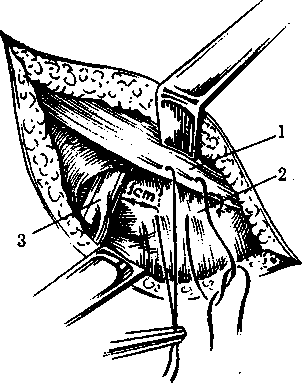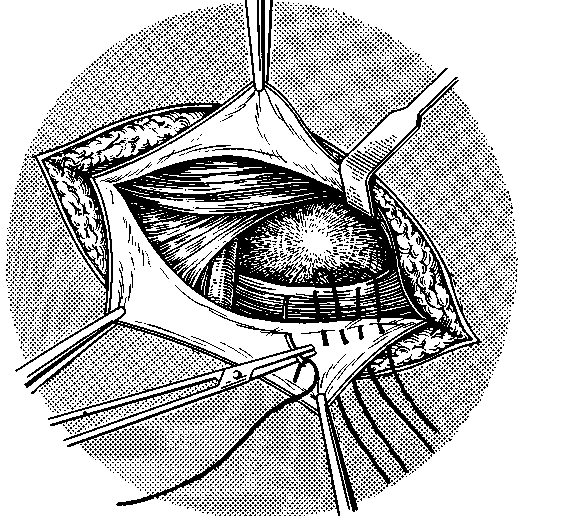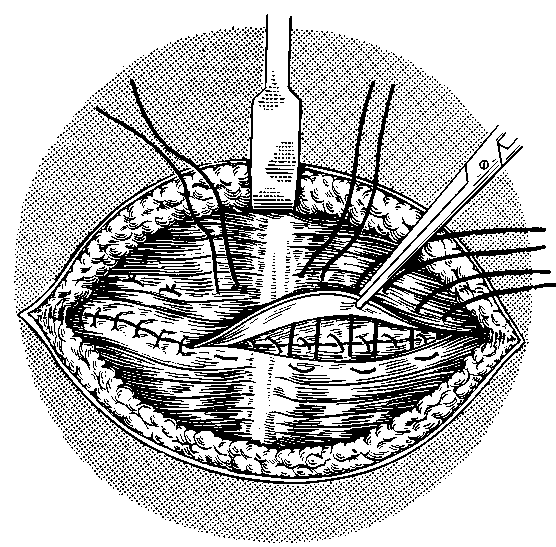
- •O. L. Sytnik, V. V. Leonov, V. Ju. Petrenko surgery. Emergency abdominal surgery
- •Contents
- •Introduction
- •Chapter 1 Acute appendicitis
- •Clinical diagnostics of acute appendicitis
- •Special examinations
- •Differential diagnosis of acute appendicitis
- •Treatment of acute appendicitis
- •Complications of acute appendicitis
- •Chapter 2 Acute cholecystitis
- •Clinical diagnostic of acute cholecystitis
- •Special examinations
- •Investigations in acute cholecystitis
- •Differential diagnosis of acute cholecystitis
- •Treatment of acute cholecystitis
- •Chapter 3 Acute pancreatitis
- •Aetiology
- •Pathophysiology
- •Classifications Savelyev V. S. (1983)
- •Atlanta classification, Beger h. G., 1991
- •Clinical diagnostic of acute pancreatitis
- •Special examinations
- •Imaging studies
- •Treatment of acute pancreatitis
- •Surgical care
- •Operations
- •Chapter 4 Perforated peptic ulcer
- •Aetiology
- •1. Predisposing factor: progressive destruction of stomach or duodenal wall.
- •Classifications
- •Clinical manifestations
- •Diagnosis programmer
- •Treatment of perforated peptic ulcer
- •Various types of vagotomy
- •Chapter 5 Peptic ulcer acute haemorrhage
- •Pathophysiology
- •Classifications
- •History
- •Clinical manifistation
- •Differential diagnosis
- •Diagnosis program
- •Imaging studies
- •Policy and choice of treatment method
- •Operations for bleeding gastric ulcers
- •Chapter 6 Bowel obstruction
- •A small-bowel obstruction (sbo)
- •Frequency
- •Pathophysiology
- •History
- •Physical examination
- •Special examinations
- •Imaging studies
- •Treatment
- •Prognosis
- •A large-bowel obstruction (lbo)
- •History
- •Clinical diagnostics
- •Special examinations
- •Imaging studies
- •Procedures
- •Medical Care
- •Surgical Care
- •Further оutpatient сare
- •Prognosis
- •Pathophysiology
- •Imaging studies
- •Chapter 7 Acute peritonitis
- •Relevant anatomy
- •Functions of peritoneum
- •Classifications
- •Pathophysiology
- •Clinical diagnostic of acute peritonitis
- •Special examinations
- •Imaging studies
- •Medical therapy
- •Intraoperative details
- •Classification
- •Abdominal Wall Anatomy
- •Clinical signs
- •Inguinal Herniorrhaphy.
- •Inguinal Herniorrhaphy. Alloplastic Repair
- •Femoral Herniorrhaphy.
- •Umbilical and Paraumbilical hernia
- •Postoperative Hernia
- •Postoperative complications
- •Tests for control Chapter 1. Acute appendicitis
- •Standards of answers
- •Chapter 2. Acute cholecystitis
- •Standards of answers
- •Chapter 3. Acute pancreatitis
- •Standards of answers
- •Chapter 4. Perforated peptic ulcer
- •Standards of answers
- •Chapter 5. Peptic ulcer acute haemorrhage
- •Standards of answers
- •Chapter 6. Bowel obstruction
- •Standards of answers
- •Chapter 7. Acute peritonitis
- •Standards of answers
- •Chapter 8. Hernias of abdominal wall
- •Standards of answers
- •Situational problem tasks
- •Standards of answers
- •Standards of answers
- •Standards of answers
- •Standards of answers
- •Standards of answers
- •Standards of answers
- •Standards of answers
- •References Obligatory literature
- •Faculty literature
- •Appendix a Algorithm of acute appendicitis diagnostic
- •Appendix b Algorithm of diagnosis and treatment of appendicular mass and abscess
- •Appendix c Algorithm of acute cholecystitis treatment
- •Appendix d Algorithm of diagnosis and treatment of acute pancreatitis
- •Appendix e Algorithm of diagnosis and treatment of perforated ulcer
- •Appendix f Algorithm of diagnosis and treatment of bleeding ulcer
- •Appendix g Algorithm of diagnosis and treatment of bowel obstruction
- •Appendix h Pathogenesis of acute peritonitis
- •Appendix k Algorithm of hernias treatment
- •Appendix l Algorithm of treatment of the strangulated hernia
- •Subject index
Femoral Herniorrhaphy.
There are some methods of surgical treatment of the femoral hernia, where the plastic repair is performed intraperitoneally from the side of thigh through the inguinal canal.
The Bassini’s method is attributed to “femoral”. It is performed through an incision, that passes under inguinal fold. After removal of hernial sac the hernial opening is closed by suturing of inguinal ligament (1) to the pectineal ligament (2) without pressure of femoral vein (3) (fig. 26). The Rudgi-Parlavecho method (fig. 27). Ends of the transversus and internal oblique muscles and inguinal ligament sutured to the periosteum of pubic bone.

Figure 26 – Bassini’s method
Figure 27
– Rudgi-Parlavecho’s
method
Umbilical and Paraumbilical hernia
An umbilical hernia is the result of improper healing of an umbilical scar, which leads to a fascial defect that is covered by skin. If the defect is to one side, it is called a paraumbilical hernia; this variant is more common in adults. The vast majority of umbilical hernias presenting in children are congenital, whereas 90% of those diagnosed in adults are acquired. These hernias are eight times more common in black children than in white ones.
The onset of umbilical or paraumbilical hernia in older patients is usually sudden, and the defect tends to be relatively small. In these patients, it is important to look for an underlying cause of increased intra-abdominal pressure (e.g., ascites or an intra-abdominal tumor).
The differential diagnosis of an umbilical hernia should include so-called caput medusae, a condition in which varicosities extend radially from the umbilicus as a consequence of portal hypertension.
Another condition to be considered is the so-called Sister Mary Joseph node, which is a metastatic deposit of intra-abdominal cancer at the umbilicus. The cancer cells reach this region via lymphatic vessels in the falciform ligament.
Other periumbilical masses that might be confused with an umbilical hernia are umbilical granulomas, omphalomesenteric duct remnant cysts, and urachal cysts.
Most of the defects are small and can therefore be closed by simple suturing. Alternatively, the Mayo technique may be used (fig. 28).

Figure 28 – Mayo technique
A subumbilical semilunar incision is made, the hernial sac is opened, the contents of the sac are reduced into the abdomen, and the sac is excised. An overlapping or waist-coating technique is then employed, in which the upper edge of the linea alba is placed so as to overlap the lower and fixed in place with a nonabsorbable mattress suture. This technique is controversial: some surgeons argue that the overlapping layers serve only to increase the tension on the repair, thus inviting recurrence.
The fascial defect is then bridged with prosthesis without fear of contact with the intra-abdominal viscera. The prosthesis is sutured circumferentially to the defect; alternatively, it can be sutured to the undersurface of the posterior rectus sheath and the linea alba above the peritoneal closure. If the peritoneum cannot be kept intact beneath the defect, omentum should be tacked to the peritoneum circumferentially to isolate the abdominal viscera from the prosthesis at least to some degree.
